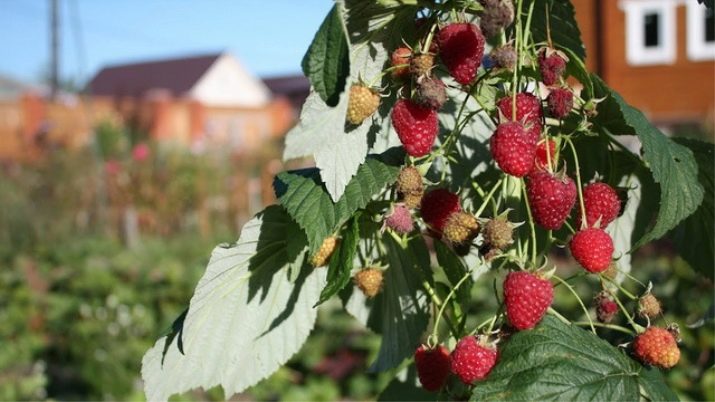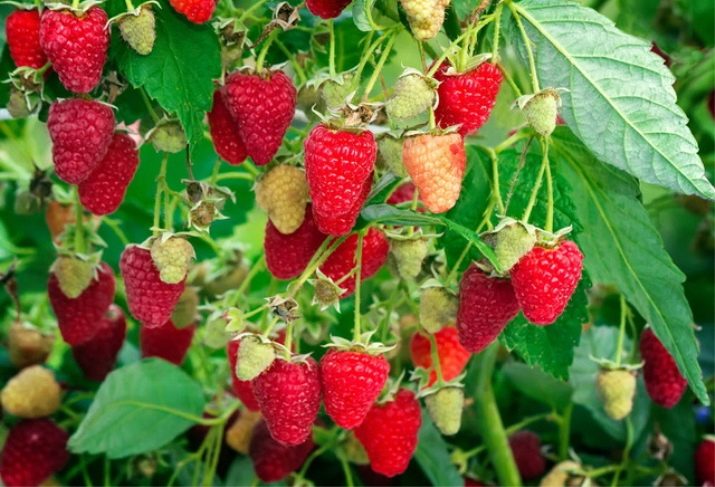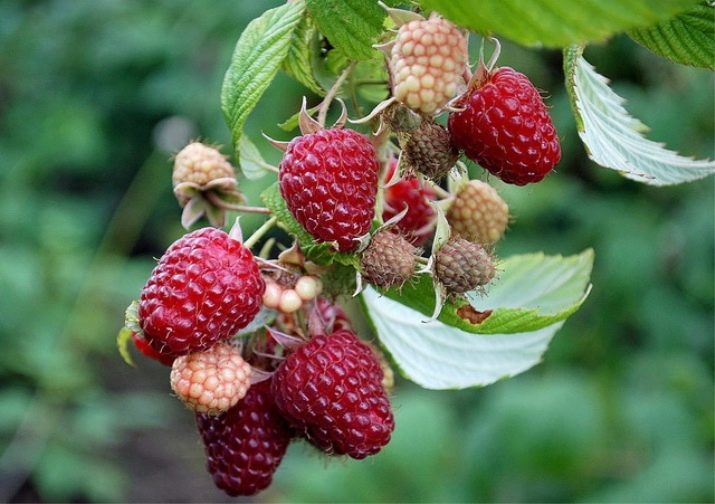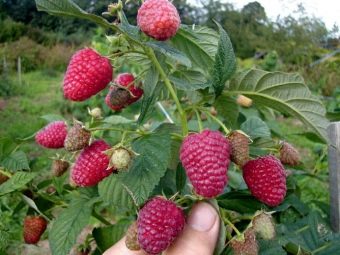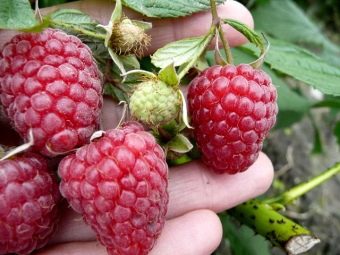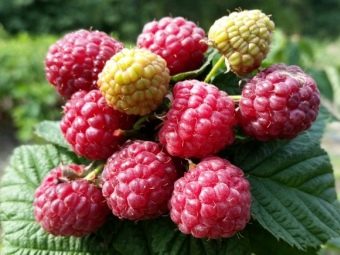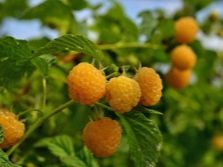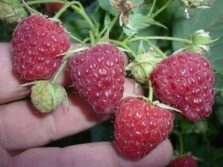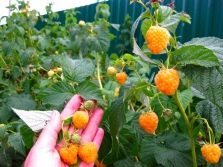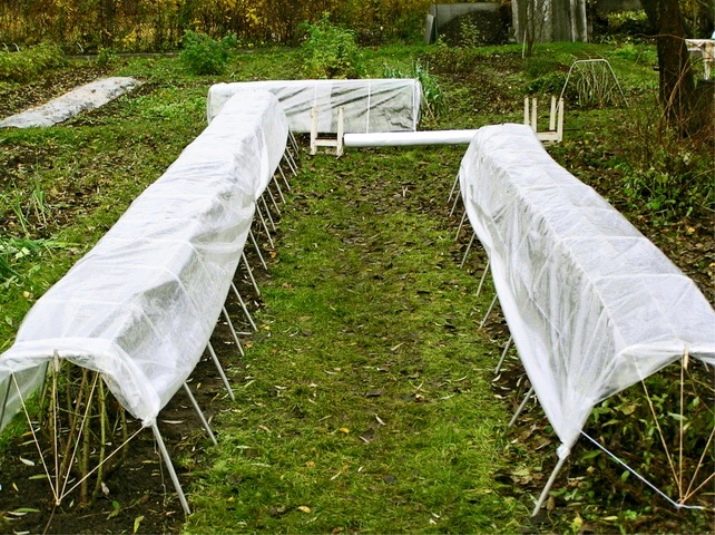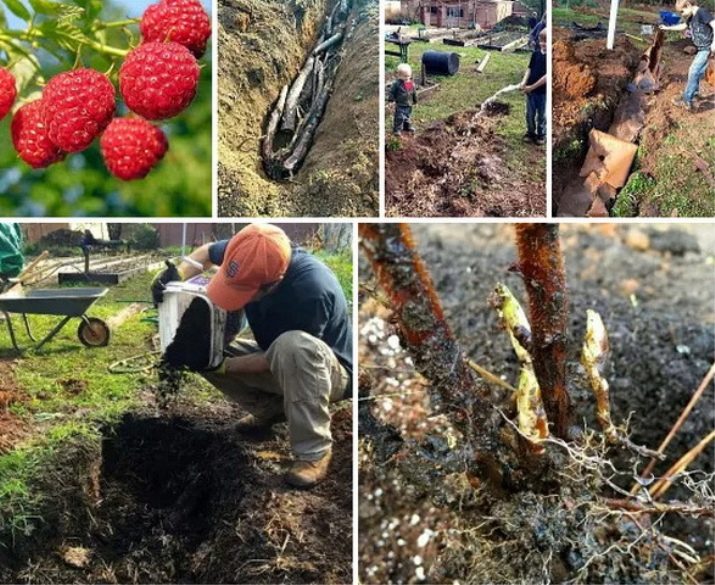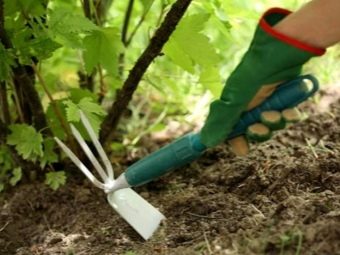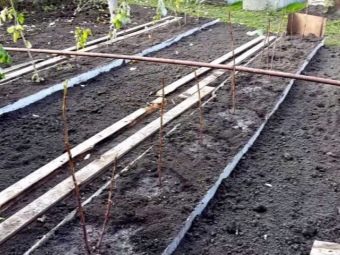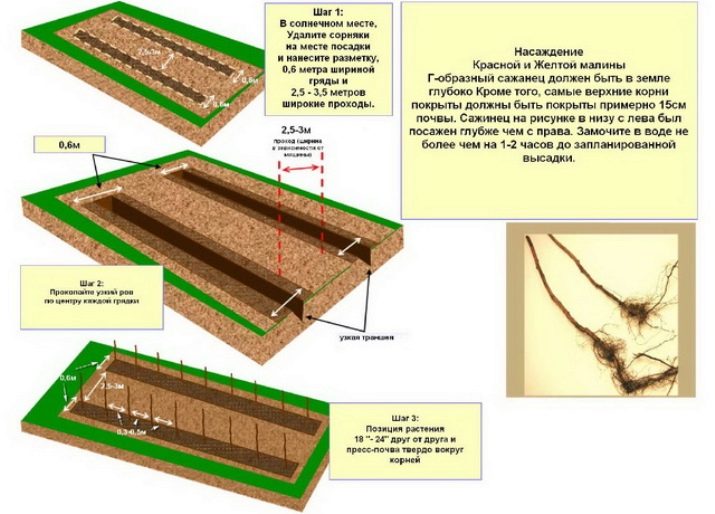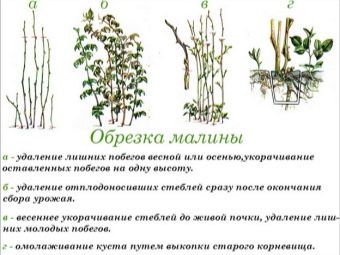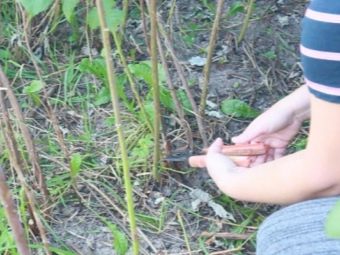Renovation raspberry: the best varieties and recommendations for growing
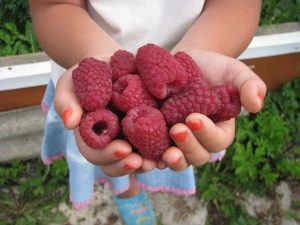
Raspberry is considered to be one of the most popular garden crops among gardeners from different countries.Some prefer traditional varieties, others choose remontant raspberries. The difference of one variety from the other is that in the second case there is an opportunity to harvest a bountiful harvest twice a year - first in the summer on last year's sprouts, then in the fall on new shoots grown in the summer.
Previously, the possibility of growing such raspberries was available only in warm regions, but not so long ago, Russian breeders developed a raspberry variety with a short growing season. This variety of repair raspberry is suitable for growing even in the northern regions of Russia.
Special features
Recently, the cultivation of remontant varieties is very popular among Russian gardeners. Some, on the contrary, try to grow traditional varieties, as they fear that the second crop will not have time to ripen due to the early frosts.
The repair raspberry is distinguished by its unpretentiousness, high fertility and resistance to diseases and pests. She can bear fruit in the first year after planting. Also, these varieties have an extended fruiting period and produce two harvests per season. In the first year after planting, provided proper care during the season, the first harvest will be possible in August or September of this year.
The next fruit raspberry will give in mid-June next year. But it is worth bearing in mind that the quality of the berries on biennial stems is somewhat worse than on annuals. Fruits grown on second-year stalks are quite soft, too dry and have a lot of seeds. Also, the first harvest of raspberries in the summer can significantly delay the second harvest, autumn. This is due to the fact that the plant spends a lot of effort on the formation of annual shoots and stems necessary for future crops.
In order to protect themselves, gardeners often plant several varieties of raspberries on their plot. By planting early, medium and late remontant raspberry varieties it will be possible to get many times more harvest and provide yourself with tasty and healthy berries for the whole year.
Which one to choose?
The repair raspberry differs in terms of fruit ripening. When making a choice in favor of a particular variety, one should take into account the climatic zone of growth of the plant.
In addition, varieties are distinguished by maturity. There are three types of remontant raspberries for ripening: early maturing, mid ripening, late maturing.
Early ripe raspberry fruits in early summer or late spring. The ripening period continues until the first frost. Since these varieties are frost resistant, they are well suited for growing in the northern regions of Russia with a cold climate. The best varieties of early ripe repair raspberries are such varieties as:
- "Hercules" - fertile variety with large berries. The plant is extremely resistant to harmful microorganisms and adverse environmental conditions. The height of the bush can reach two meters. The main advantages of this variety include fairly simple care, good transportability and excellent taste. One bush "Hercules" gives up to 2.5 kg of berries.
- "Bryansk miracle" - The height of the bush reaches 1.5 meters. The fruiting escape zone is 2/3 of the total height of the plant. The fruits of this variety are quite large, weighing up to 11 grams and approximately 4 cm long. The berries have a sweet-sour taste and a beautiful and even appearance. Plants are resistant to drought and high temperatures, and also well transportable. Berry ripening begins in mid-August and ends with the onset of late frosts. With proper plant care, one raspberry bush can bring about 3-4 kg of berries.
- "Diamond" - raspberry bush with large berries weighing about 6 g, which are distinguished by bright taste and unusual color. The stems of the plant do not have thorns, which allows you to quickly and painlessly harvest. The height of the stems is up to 140 cm. At a temperature of +5 degrees Celsius, berries can be stored for a long time.The main advantage of this variety is that there is no need to pick berries every day as they ripen. Ripe berries unchanged may remain on the stems during the week. One bush brings an average of 3-8 kg of berries.
- "Red Guard" - variety is very popular due to the huge size of its berries. Shoots reach a height of 1.6 meters. Half the height is fruitful. The berries of this variety are very tasty and sweet. The mass of each berry is about 6 grams. The bush brings a maximum of 3 kg of such berries.
- "Bryansk Jubilee" It is a small bushes with a small branching. With proper care of the plant, the first fruits appear at the end of July. The berries are medium sized. They have a rich red color, sweet and sour taste and elongated shape. The yield of these bushes is quite high. The main thing is to feed and water the plant in a timely manner. Some diseases of the “Bryansk Jubilee” are not terrible.
All the above varieties are adapted for growing them in regions of Russia with adverse climatic conditions.
Mid-season varieties of remontant raspberries begin to bear fruit towards the end of August. Maturation lasts until the first frost, so they are suitable for cultivation in central Russia. Examples of the most suitable varieties of mid-season raspberries for cultivation in the Moscow region and other areas of central Russia:
- "Ruby Necklace" - The plant is a medium-sized shrub with a small number of stems. The berries are cylinder-shaped, painted in a bright ruby color. The taste of the fruit is sweet and sour. The variety is quite fruitful, with one bush per season you can collect about 2.5 kg of tasty and large berries. Fruit weight is about 8 grams. A ruby necklace has good transportability, which is why it is often used for cultivation on an industrial and commercial scale. After harvesting the shoots must be pruned. So you prepare the plant for wintering.
- Orange Miracle - The variety got its name due to the bright orange color of its fruits. The weight of the berry is about 12 g, and the length is 4 cm. The excellent taste of the fruit. The shoots of the plant are not high, but the shape of the berries is elongated. Due to the high yield and large size of the fruit variety is very popular among gardeners.
- "Polyana" - variety is a small bushes with an average productivity. Berries are small and weighing no more than 4 grams. Berries grow on branches close to each other. The fruitful area of the shoot is about one meter. Gardeners are attracted to this variety by the fact that it is particularly resistant to harmful insects and fungal diseases.
- "Atlant" - variety, characterized by fairly large berries of regular shape, elongated at the end. The mass of one berry is about 11 g. The variety is characterized by good transportability, resistance to various diseases and good appearance.
- "Indian summer" - The bush is able to reach a height of 1.8 meters. Shoots pretty sprawling. Productivity in this variety is small. On average, about 1 kg of berries can be harvested from a bush per season. The size of the berries is small. The shape of the berries is spherical or round-conical. The color of ripe fruit is dark crimson. Many people love “Indian Summer” for its sweet taste, unpretentious care, high resistance to many pests and diseases, such as spider mites and powdery mildew. Also, the plant tolerates winter and does not require additional shelter.
“Indian Summer” is the first variety bred in Russia. It is suitable for growing in the central and southern part of Russia.
The repair raspberry can also be late ripe. These varieties are:
- Cumberland - has shoots of medium height with a large variety of thorns. Berries of black color, small size, taste very sweet.It is characterized by simultaneous ripening, cold resistance, and also tolerates drought, temperature changes and various diseases, including those associated with parasites.
- Heritage - is a bushes with large and high shoots. The berries are bright red, medium size. It has a high yield, tolerates disease well, but suffers from a sharp cooling and high humidity.
In addition to all the above varieties of remontant raspberries, there are those that are even more productive. These varieties include:
- "Brusvian" - This is an early ripe raspberry. It is a tree-like shrub with strong shoots that do not need garters. Its height can reach two meters. The average productivity during the season is 8 kg. In addition, "Brusuvian" has a great taste.
- "Yaroslavna" - This variety is a yellow berries. Berries and the appearance of the bush is very similar to the "Brusvian", but have smaller sizes. With proper and timely care, Yaroslavna will be able to produce the same large number of fruits.
- "Polka" - It is a small medium sized shrub with a large number of lateral stems. "Polka" has a long fruiting period. The advantage that many gardeners prefer is the lack of thorns on the shoots. Berries differ neat appearance and sweet, but not cloying. Thanks to its taste, Polka is called the benchmark. Although this variety is not the most productive, on average, it is possible to collect about 3.5 kg, but it is very respected for its excellent transportable properties.
- "Penguin" - is a bush with a height of 1.3 meters. The variety is the most productive. With proper care, one bush brings up to 15 kg of fruit. The first harvest is taken at the end of May, the second is ripe by the end of August. Differs in a variety of pink berries about 7 grams with small bones. They taste sweet and sour. Due to the small growth of the bush there is no need for garter and support of the shoots.
- "Shugana" - variety comes from Switzerland. On average, 9 kg of berries are removed from the bush. The berries are quite large and with excellent taste characteristics.
- "Apricot" - exotic variety. It is a small but quite prolific shrub. The average weight of berries - 3-4 grams. The berries are small, but the bush is completely covered with them. Fruits are yellow with a pink tinge. Sometimes the color of the berries can be rich amber. The taste resembles the taste of apricot, thanks to this and this name. The yield of this variety can last until mid-October.
- Yellow Giant - This is the most indicative variety among remontant raspberries in terms of yield. The berries on the shoots are very large, weighing about 12 grams. One bush brings about 12-15 kg, if you follow all the rules of plant care. The quality and taste of the berries is excellent. Also, the “yellow giant” is notable for its particular cold hardiness and crop stability.
Among the popular varieties can be identified and such as:
- "Polana";
- "Taganka";
- "Eurasia";
- "Nugget";
- "Imara";
- "Caramel".
They have mostly only positive reviews. But it is necessary to look, whether they are suitable for the north - for example, the Leningrad region, Siberia or Kuban.
How to select for different regions?
Russia is the world leader in raspberry cultivation. The temperate and cold climate of our country is ideal for breeding and growing this berry. But you need to carefully select one or another variety that is suitable for growing it in your area. Attention should be paid to frost resistance, tolerance to heat and drought, as well as to how the plant tolerates winter.
Some raspberry varieties do not tolerate frost and require additional shelter for the winter in regions such as the Moscow region, the Urals and other central Russia.When growing raspberries in different areas there are pros and cons.
In most parts of our country, the summer is short, and two raspberry crops often do not have time to ripen. But for the middle zone and the northern corners of Russia, benefits were also found for growing this variety of berries. Experienced gardeners are trying to prune old shoots, thus giving the plant to quickly gain strength and grow new young and more fruitful shoots. Thus, abandoning the first harvest, they get one, but richer and more abundant harvest at the end of the summer, and in the second year of cultivation - in September or October.
This does not apply to the southern areas. In these places there are a lot of warm and sunny days, thanks to which the remontant raspberry can fully justify its name and give two harvests per season.
On the one hand, favorable growing conditions in the south of the country contribute to the collection of a large two-time crop of raspberries, but on the other hand, it should be borne in mind that the raspberries come from northern latitudes, therefore it is more frost resistant than drought resistant.
Raspberries easily tolerate low temperatures, long spring and cool summer for her - the best option. Often it grows better in regions with a cool climate, so it is important to choose the right variety for cultivation in warm or temperate latitudes.
It has been scientifically proven that the problem of growing remontrant raspberries in southern areas is the drying of plant shoots in summer, as well as their exposure to snow from the wind in winter.
For the successful growth and ripening of raspberries, it is necessary:
- protect the shoots from the wind;
- residual moisture in the soil;
- It is advisable to avoid direct sunlight. It is better that the area where the raspberry grows, was shaded.
Remember, raspberries are not the most fastidious plant, and it can grow both in the south and in the north, but you should choose varieties suitable for your region, and correctly determine the place for planting on your site. Raspberries grow everywhere, but require different care depending on the climate, therefore it gives a different amount of crop.
Tips from experienced gardeners
Care in the spring and preparation for winter in the open field should be done very carefully. The scheme and the correct technology works on the plot will help grow a good harvest.
Every gardener wants his plants to bring the highest possible yield. Varieties of remontant raspberries, as shown by the above characteristics, will bring much greater results than ordinary varieties. The benchmark of all varieties in quality and quantity is the “Yellow Giant” variety. No other sort of remontant raspberry can boast such yield indicators.
When choosing a raspberry variety, it is necessary to take into account the conditions of their growth. For each variety there is a zone suitable for climatic conditions. And in order to get a good result at the end of the season, it is necessary to take care of the plants in a quality and timely manner. Poor care can also cause disease and death of the plant.
Before planting raspberries on the ground, you must choose the best place for this. A great place will be the south side of the site with high-quality and loose earth. It is better to avoid too shaded areas in the northern regions, since the sun is necessary for good fruit ripening.
The best time of year for planting is autumn, if necessary, you can do it in summer. The main thing is to observe the time, depth of planting the seedling and the density of the planted plants.
In terms of time, it is recommended to plant reparative raspberry bushes at least one week before the first frost. A common raspberry can produce a crop even with slight frosts, but the young plant is extremely necessary to have time to land before cooling.
Many gardeners practice planting raspberries with the onset of heat, and often this gives even better results than planting in the fall.But not all saplings will have time to gain enough strength, reach maturity and produce a good harvest. A bountiful harvest will be available only in the second year after planting.
As a rule, reparative raspberry bushes reach a height of 2.5 meters, the stems are thick and durable, and the root system is tuft. Because of such a device, the plant receives nutrients only from the depth at which the lateral roots are located. Therefore, the maximum depth of landing of the remontant raspberry is 30-50 cm. This will allow the plant to easily obtain nutrients and minerals.
Determining the density of planting, when planting a variety of remontant raspberries should pay attention to the thickness and height of the stems. You should not plant the plants close to each other (no more than one bush per linear meter) so that this does not prevent their successful growth, as well as care for them.
It is also necessary to pay due attention to raspberry fertilizers. When planting on the bottom of a previously dug pit, add compost with the calculation of two buckets per linear meter or humus and potash fertilizers. Fertilizers can be replaced with wood ash.
Fill the pit should be following layers:
- selected fertilizers;
- fertilized land;
- a layer of fertile land.
To get a good result, you must also timely trim the bushes. If there are varieties of early ripe raspberries in the garden plot, biennial plants should be pruned after the crop has been harvested. As a rule, this can be done in late autumn. In order to get a good harvest in summer, shoots should be cut to the ground level. To trim correctly, the following rule should be followed:
- cut the shoots every year 2 times;
- the best time for circumcision is November or December and April;
- do not cut the tops of the plant, as fertilization takes place here - this is one of the most basic mistakes of gardeners, which prevents them from getting a rich harvest;
- pruning is needed in order to delay the harvest.
To get the proper yield, it is important to prune the raspberry in spring regularly. It should remove the frozen and dried over the winter areas at a distance of 10-15 cm from the first bud on the stem. Such pruning is done in April, when the first buds begin to appear, and the dead parts of the stem are clearly visible.
See how to grow remontant raspberries in the next video.


